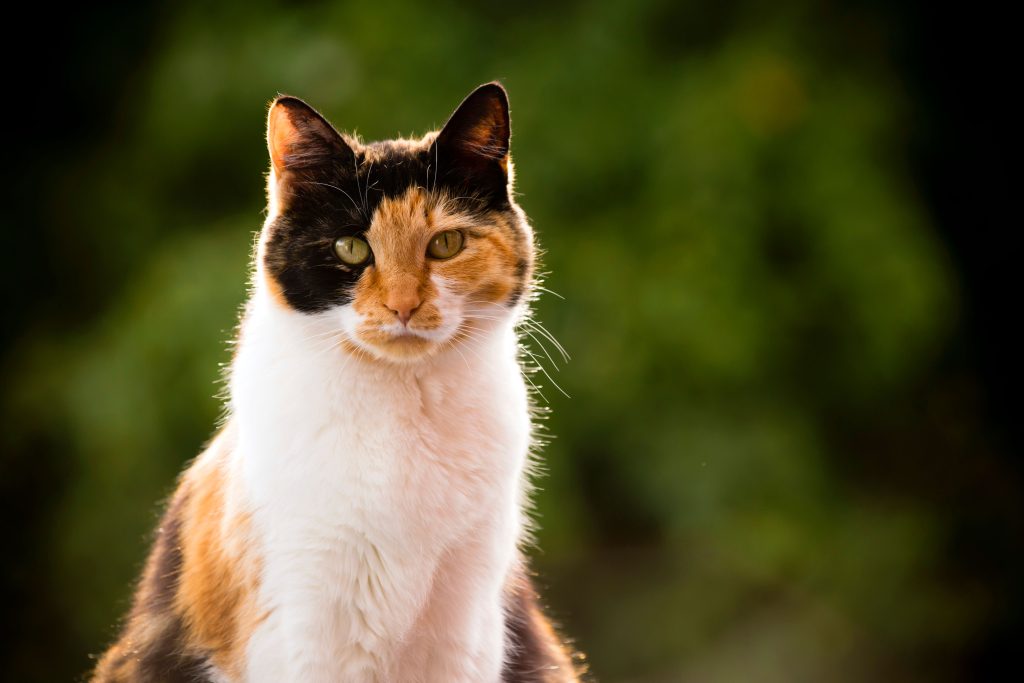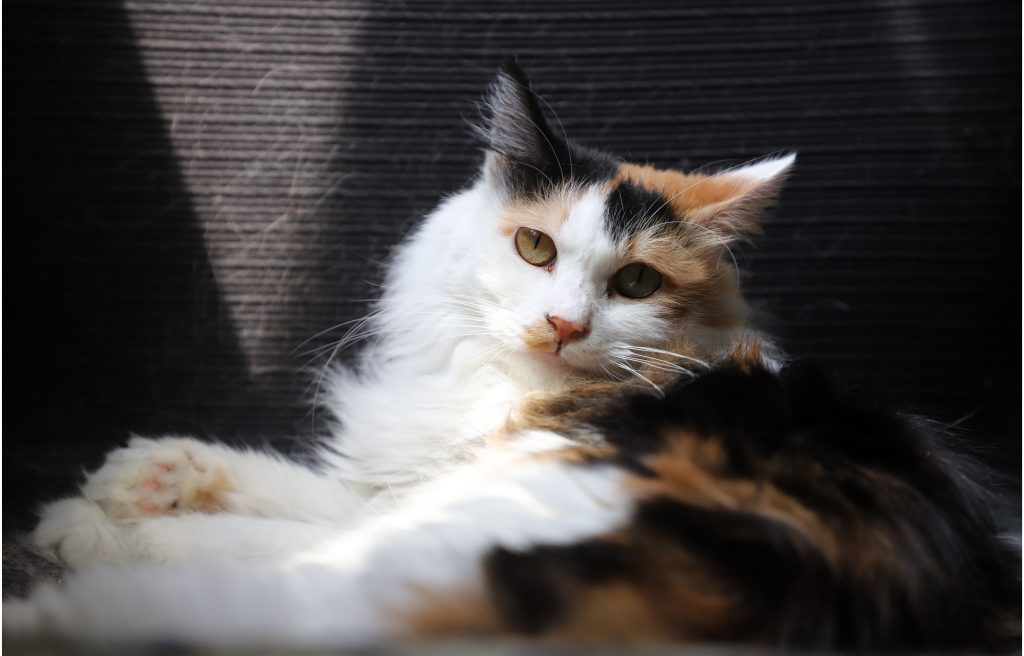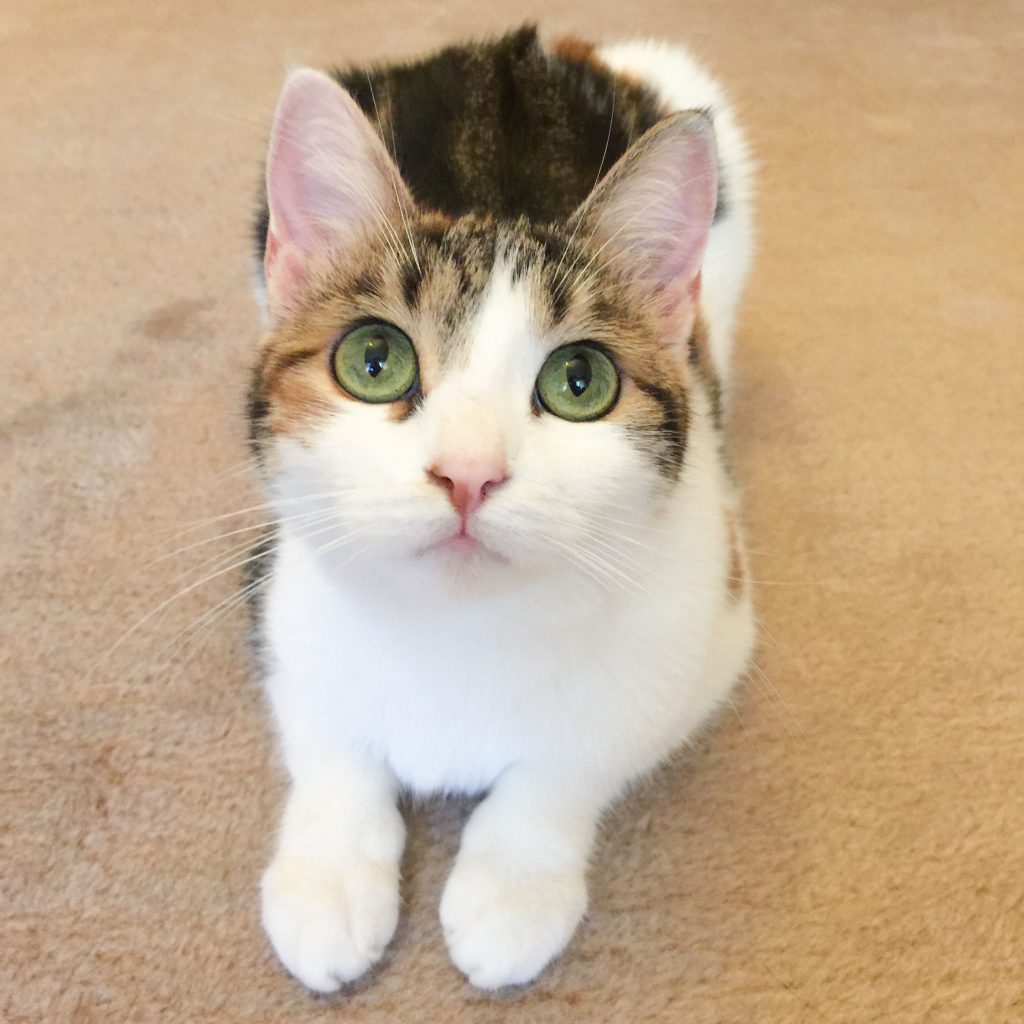Calico cats, with their striking tricolored coats, are a sight to behold. However, beyond their unique appearance, female calico cats, like all pets, are prone to certain health issues. Understanding these common health problems is essential for providing the best care and ensuring their well-being. In this article, we’ll delve into the various health concerns that female calico cats may face, exploring their causes and offering practical solutions to help keep your furry friend healthy and happy.

Understanding Female Calico Cats
Before delving into specific health problems, let’s take a moment to appreciate the beauty and uniqueness of female calico cats. These felines are characterized by their distinctive coat colors, which typically include patches of white, black, and orange or ginger. The intricate patterns on their fur make them stand out among other cat breeds, earning them admirers worldwide.

Common Health Problems in Female Calico Cats
Just like any other cat breed, female calico cats are susceptible to various health issues. By being aware of these common ailments, pet owners can take proactive steps to prevent or manage them effectively. Some of the most prevalent health problems in female calico cats include:
- Urinary Tract Infections (UTIs): UTIs are a common concern in cats, including female calicos. Symptoms may include frequent urination, straining to urinate, blood in the urine, and urinating outside the litter box. UTIs can be caused by bacteria or other factors, and prompt veterinary attention is essential for diagnosis and treatment.
- Obesity: Obesity is a growing problem among domestic cats, including female calicos. Factors such as overfeeding, lack of exercise, and genetic predisposition can contribute to weight gain. Obesity increases the risk of various health issues, including diabetes, arthritis, and heart disease. Maintaining a balanced diet and providing regular exercise are crucial for preventing and managing obesity in cats.
- Dental Problems: Dental issues, such as periodontal disease and tooth decay, are prevalent in cats of all breeds, including calicos. Poor dental hygiene can lead to pain, difficulty eating, and even systemic health problems. Regular dental care, including brushing your cat’s teeth and providing dental treats or toys, can help prevent dental problems and maintain oral health.
- Skin Conditions: Female calico cats may be prone to skin conditions such as dermatitis, allergies, and fungal infections. Symptoms may include itching, redness, hair loss, and skin lesions. Identifying the underlying cause of the skin problem is essential for effective treatment, which may include topical medications, dietary changes, or allergy testing.
- Feline Lower Urinary Tract Disease (FLUTD): FLUTD is a collective term for various conditions affecting the lower urinary tract in cats. Symptoms may include urination difficulties, bloody urine, and frequent licking of the genital area. FLUTD can have multiple causes, including bladder stones, urinary tract infections, and stress. Treatment may involve medication, dietary modifications, and environmental enrichment to reduce stress.

Solutions for Female Calico Cat Health Problems
While the health problems mentioned above can be concerning, there are several steps that pet owners can take to promote their female calico cat’s well-being:
- Regular Veterinary Check-Ups: Schedule regular veterinary check-ups for your female calico cat, ideally at least once a year. Routine examinations allow veterinarians to detect any health issues early and provide appropriate treatment.
- Balanced Diet: Provide your cat with a balanced diet that meets her nutritional needs. Avoid overfeeding and monitor her weight regularly to prevent obesity. Consult with your veterinarian to determine the best diet for your cat’s age, activity level, and health status.
- Hydration: Encourage your cat to drink plenty of water to maintain hydration and urinary tract health. Consider offering wet food or adding water to dry food to increase moisture intake, especially for cats prone to urinary tract problems.
- Dental Care: Implement a dental care routine for your cat, including regular tooth brushing and dental check-ups. Dental treats or toys designed to promote oral health can also be beneficial.
- Environmental Enrichment: Create a stimulating and stress-free environment for your female calico cat. Provide opportunities for exercise, mental stimulation, and social interaction to prevent behavioral issues and reduce the risk of stress-related health problems.
Read Also: Burmese Cat Colors
Conclusion
Female calico cats are cherished companions known for their distinctive appearance and charming personalities. While they bring joy to their owners’ lives, it’s essential to prioritize their health and well-being. By understanding the common health problems that female calico cats may face and taking proactive measures to prevent and manage these issues, pet owners can ensure that their furry friends live long, healthy lives filled with love and happiness.
For more information about caring for your female calico cat’s health, consult with your veterinarian or visit reputable online resources such as Vet Amerikan’s guide on calico cats.
Click here to learn more about calico cats from Vet Amerikan.
Remember, a proactive approach to your cat’s health is the key to a happy and fulfilling companionship for years to come.
FAQ’s
- What makes female calico cats more prone to certain health problems?
- Female calico cats, like all cats, can be susceptible to various health issues due to factors such as genetics, environment, diet, and lifestyle. Understanding these factors can help pet owners identify and address potential health concerns early on.
- How can I tell if my female calico cat is experiencing a health problem?
- Watch for changes in your cat’s behavior, appetite, litter box habits, and physical appearance. Signs such as excessive grooming, lethargy, weight loss or gain, vomiting, diarrhea, and difficulty urinating may indicate underlying health issues that require veterinary attention.
- What steps can I take to prevent obesity in my female calico cat?
- To prevent obesity in your cat, provide a balanced diet, measure food portions, and avoid overfeeding. Engage your cat in regular exercise and play to promote physical activity and maintain a healthy weight. Monitoring your cat’s weight and body condition regularly can also help prevent obesity-related health problems.
- Are there specific grooming tips for female calico cats to prevent skin problems?
- Regular grooming is essential for maintaining your calico cat’s skin and coat health. Brushing her fur regularly helps remove loose hair, dirt, and debris, reducing the risk of skin problems. Additionally, keep your cat’s living environment clean and free of potential irritants or allergens that may contribute to skin issues.
- How often should I take my female calico cat to the veterinarian for check-ups?
- It’s recommended to schedule regular veterinary check-ups for your female calico cat, ideally at least once a year. These routine examinations allow veterinarians to assess your cat’s overall health, address any concerns, and provide preventive care such as vaccinations, parasite control, and dental check-ups.
